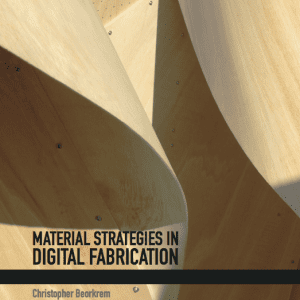Material Strategies in Digital Fabrication – Book
– Excerpts from manuscript proposal (2010)
Undoubtedly, the greatest advances in architectural discourse over the past fifteen years are due to the wide spread availability of advanced software and computer- controlled manufacturing tools.These tools have brought about a windfall of change, for the process of design and construction and the expectations for singular architec- tural works.While infatuated with our new automated sculptural capabilities we have often lost sight of our larger responsibilities to human inhabitation and the phenomenological experience of materiality.
Architects and designers, must respond to the post- great recession standards society is expecting of them. There is no stopping the arc of digital advancement but there must be a more grounded outlook going forward. The material choices designers make bare the burden of their performative impact. If we are to select a particular parameter to define exceptional work, materiality and construction ought to be at the front of the line.All too often construction techniques are post- rationalized layers of the design process. Forms are brought to engi- neers and consultants to have systems applied to them. This often results in convoluted and piece- meal struc- tural integration and excessively high construction costs. Alternatively, we could use inventive alternatives as the defining logic behind innovative architectural form. This text outlines, in graphic detail, the processes used to de- limit architectural form through material constraints and performance, in nearly forty examples of our generations most progressive architectural works, highlighting projects which both define the trend and projects carving new territory.
